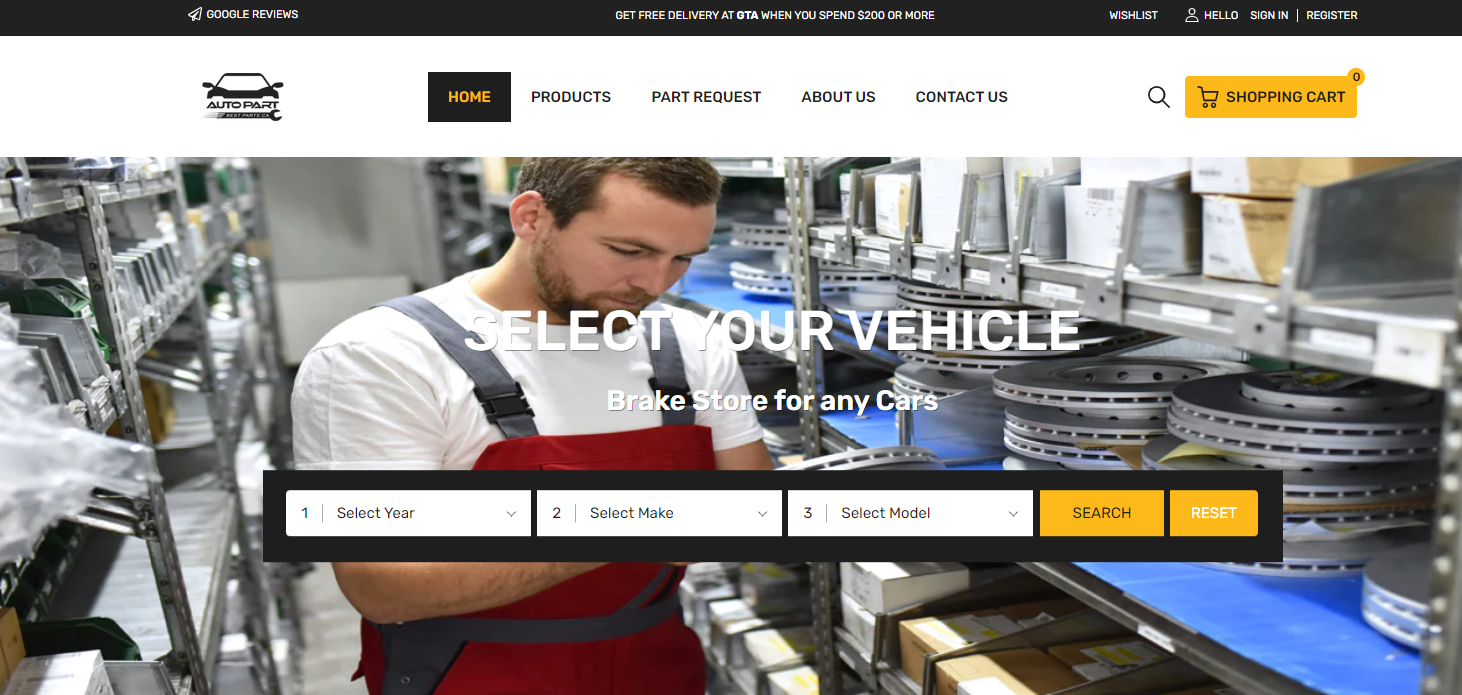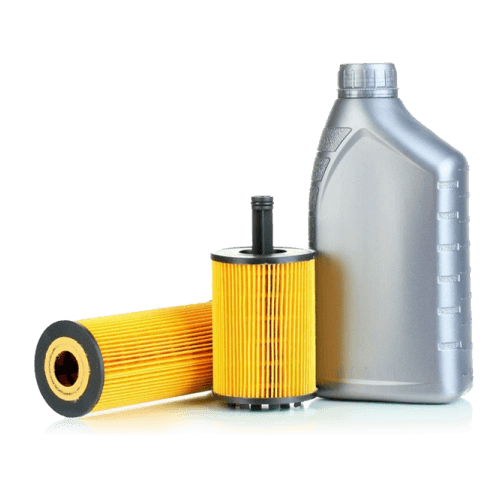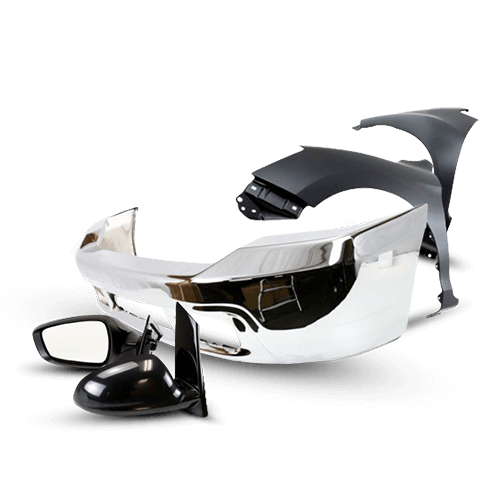
Types of Brake Pads and Brakes in Cars
Few components are as important to your vehicle's safety as the Types of Brake Pads and brakes. These components are in charge of one of the most basic functions of your vehicle: stopping it. In this article from the Best Part website, we'll look at the various types of brake pads and brakes available for your vehicle, arming you with the information you need to make informed maintenance and replacement decisions.
The braking system in your vehicle is made up of several critical components, the most important of which are brake pads and brakes. These components work together to ensure that your vehicle can slow down or stop completely when necessary. Understanding how car brakes work and the various types of brake pads available can have a significant impact on your vehicle's performance and, most importantly, your safety.
What is brake pads?
Brake pads are essential parts of a vehicle's braking system. When the brake pedal is applied, they perform an important part in slowing or stopping the car. These pads function by causing friction on the moving braking rotors or discs, converting kinetic energy into heat and thereby bringing the vehicle to a stop. In the context of our discussion of brake pad types, it's important to remember that there are several types of brake pads available, each with unique materials and characteristics that influence their performance and suitability for certain vehicle types and driving circumstances.

Checking the Types of Brake Pads
Brake pads play a pivotal role in the braking system, generating friction against the brake rotors to halt wheel movement. When it comes to choosing the appropriate brake pads for your vehicle, you'll encounter several options, each with its own set of advantages and disadvantages. Let's explore the most common types of brake pads:
Semi-Metallic Brake Pads
Semi-Metallic Brake Pads are a popular option among car owners. These heat dissipation and longevity pads are made from a metal blend that often includes copper, steel, and sometimes graphite. As a result, they are an excellent fit for high-performance vehicles.
Non-Metallic Brake Pads
Non-Metallic Brake Pads, also known as organic brake pads, employ materials such as rubber, glass, and resin in their construction. They are prized for being quieter and generating less dust compared to their metallic counterparts. However, they may wear out faster.
Non-Asbestos Organic (NAO) Brake Pads
Non-Asbestos Organic (NAO) Brake Pads stand out as an eco-friendly option. Comprising organic materials like rubber, Kevlar, or glass blended with resins, NAO brake pads provide quiet and gentle braking action on rotors. However, they may not match the performance of semi-metallic pads.
Ceramic Brake Pads
Ceramic Brake Pads are famed for their exceptional heat resistance and low noise levels. This makes them an ideal choice for daily commuters seeking consistent braking performance. Keep in mind that they can be pricier than other options.

Low-Metallic Brake Pads
Low-Metallic Brake Pads feature a small percentage of metal fibers mixed with organic materials. They provide strong stopping power and are frequently used in sports cars. However, they may generate more dust and noise.
read more: Is it Dangerous to Drive with Worn Brake Pads?
Choosing the Right Brake Pads for Your Car
One critical aspect of automotive maintenance that is frequently overlooked is the selection of brake pads. These unassuming components are critical to the safety and performance of your vehicle. Neglecting their significance can have serious consequences, ranging from reduced stopping power to excessive wear and tear on your vehicle's braking system. Following, we'll delve into the world of brake pads to help you make an informed decision about which ones are best for your vehicle.
Selecting the appropriate brake pads hinges on the type of vehicle you own and your driving habits. Here's a breakdown of which Types of Brake Pads are suited to different vehicle categories:
Trucks/SUVs/Vans
For larger vehicles like trucks, SUVs, and vans, Semi-Metallic Brake Pads or Ceramic Brake Pads prove optimal. These options can withstand the increased weight and deliver reliable stopping power.
Midsize Cars
Midsize cars can benefit from a variety of brake pad types. Nevertheless, Ceramic or Low-Metallic Brake Pads often find favor due to their balance of performance and durability.
Light Compact Cars
Light compact cars can suffice with Non-Metallic or NAO Brake Pads. These options deliver sufficient stopping power without excessive rotor wear.
Sports Cars
Enthusiasts of sports cars frequently opt for Semi-Metallic and Ceramic Brake Pads. These selections provide the high-performance braking necessary for spirited driving.
To summarize, the choice of brake pads is determined by the type of vehicle, driving habits, and performance requirements. When choosing the right type of brake pad for your vehicle, consider factors such as noise levels, dust production, heat resistance, and durability. Regular maintenance and the selection of the proper brake pads are critical for ensuring that your vehicle's braking system performs optimally and keeps you safe on the road.
Introducing and Checking the Types of Brakes
Your vehicle's brakes are a vital component when it comes to ensuring safety on the road. They play a pivotal role in bringing your car to a stop when needed, and understanding the different types of brakes, including brake pads, available can empower you to make informed decisions about your vehicle's maintenance and performance.

In following, we will introduce you to the various types of brakes, shedding light on their functions, advantages, and considerations, with a particular focus on the diverse world of brake pads. We aim to help you ensure your vehicle's braking system is in optimal condition. Whether you're a car enthusiast or simply a conscientious driver, delving into the world of brakes, especially the various Types of brake pads, is a valuable endeavor that contributes to your safety and driving experience:
Hydraulic Brakes
Hydraulic brakes are a type of braking system commonly used in vehicles, especially in modern cars and trucks. They operate based on the principles of fluid dynamics, using hydraulic fluid to transmit force from the brake pedal to the brake calipers.
Electric Brakes
Electric Brakes are commonly found in hybrid and electric vehicles. They employ an electric motor to supply braking force, contributing to regenerative braking and energy recovery.
Emergency Brakes
Emergency Brakes, also known as handbrakes or parking brakes, operate independently of the primary braking system. They are manually operated and primarily used for parking.
Parking Brakes
Parking brakes, also known as handbrakes or emergency brakes, are a vital component of a vehicle's braking system. They serve two primary functions: holding the vehicle in a stationary position when parked and providing an emergency braking option in case the primary braking system fails.
Mechanical Brakes
Mechanical brakes, also known as drum brakes, are a type of braking system that relies on mechanical force to slow down or stop a vehicle. While they are less common in modern vehicles compared to hydraulic brakes, they are still used in some applications, such as in certain rear-wheel-drive cars and older vehicles.
Power Brakes
Power Brakes, or power-assisted brakes, depend on vacuum or hydraulic pressure to amplify the force exerted on the brake pedal. This feature makes braking more effortless and efficient.

Conclusion
In summary, comprehending the various Types of Brake Pads and brakes available for your vehicle is indispensable for maintaining safety and optimal performance on the road. Whether you drive a compact car, a heavy-duty truck, or a sports car, there exists a suitable brake pad and brake system to meet your needs. Regular inspection and maintenance of your brakes are essential to ensure they function at their best, guaranteeing your safety during your journeys.
By choosing the right combination of Types of Brake Pads and brakes for your vehicle, you can elevate your driving experience and travel with confidence, secure in the knowledge that your stopping power is top-notch.
In the realm of automobiles, brakes are your ultimate safety net. Refuse to compromise on quality and performance; invest in the right brake components for a smooth and secure ride.
FAQ
• How often should I replace my brake pads?
Brake pad replacement intervals can vary depending on driving habits and pad material. On average, they may need replacement every 30,000 to 70,000 miles.
• Are ceramic brake pads worth the extra cost?
Ceramic brake pads offer exceptional performance and reduced dust, making them an excellent choice for sports cars and those who prioritize a clean wheel appearance.
• Can I replace brake pads myself?
While it's possible to replace brake pads as a DIY project, it's essential to have the necessary tools and knowledge. If you're unsure, it's best to consult a professional mechanic.
• What signs indicate it's time to replace brake pads?
Common signs include squeaking or grinding noises when braking, reduced braking performance, and visible thinning of the pad material.
• Are semi-metallic brake pads noisy?
Semi-metallic brake pads can produce more noise than other types due to the metal content. However, advancements in design have reduced noise levels in recent years.
• Do ceramic brake pads wear out rotors faster?
Ceramic brake pads are known for being rotor-friendly and producing less wear on the rotors compared to some other pad materials.























































